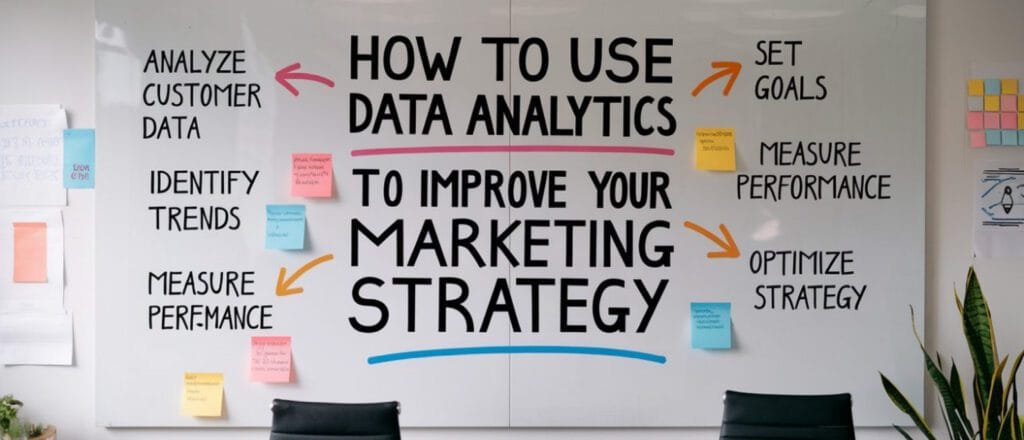In the ever-evolving landscape of digital marketing, Google’s Performance Max campaigns have emerged as a powerful tool for advertisers seeking to maximize their reach across Google’s vast network. However, with this expanded reach comes an unwelcome companion: spam leads. These low-quality or fraudulent submissions can drain your marketing budget, skew your data, and waste valuable time that could be better spent nurturing genuine prospects.
If you’re struggling with spam leads in your Performance Max campaigns, you’re not alone. Many marketers face this challenge, but the good news is that there are effective strategies to combat this issue. This comprehensive guide will walk you through proven techniques to minimize spam leads and optimize your campaigns for quality conversions.
Understanding Spam Leads in Performance Max
Before diving into solutions, it’s essential to understand what we’re dealing with. Spam leads in Performance Max campaigns typically fall into several categories:
- Bot-generated submissions: Automated programs filling out forms with fake information
- Competitor clicks: Rival businesses clicking on your ads to deplete your budget
- Click farms: Organized groups paid to click on ads and submit forms
- Mistargeted users: People who have no genuine interest in your products/services
Performance Max campaigns can be particularly vulnerable to spam due to their automated nature and broad reach across Google’s properties. Unlike traditional search campaigns where you have more control over keywords and placements, Performance Max uses machine learning to optimize ad delivery across YouTube, Display, Search, Maps, Gmail, and Discovery.
The costs of spam leads extend beyond just wasted ad spend:
- Time waste: Your sales team spends valuable hours following up on non-existent leads
- Data corruption: Spam skews your analytics, making it difficult to make informed decisions
- Reputation damage: Poor lead quality can create tension between marketing and sales teams
- Decreased ROI: Your true customer acquisition cost is higher than reported
Optimizing Landing Pages to Filter Out Spam
Your landing page is your first line of defense against spam leads. Here’s how to optimize it:
Form Validation Implementation
Implementing robust form validation can significantly reduce spam submissions:
- Email validation: Use regex patterns to ensure proper email formats and consider using email verification services like Kickbox or BriteVerify
- Phone number verification: Require proper formatting and consider SMS verification for high-value offers
- Required fields: Strategically use required fields to discourage casual submissions
- Custom validation: Implement industry-specific validation rules (e.g., company size ranges)
Example validation approach:
javascript
// Email validation regex
const emailRegex = /^[^\s@]+@[^\s@]+\.[^\s@]+$/;
// Phone validation for US numbers
const phoneRegex = /^\(?([0-9]{3})\)?[-. ]?([0-9]{3})[-. ]?([0-9]{4})$/;CAPTCHA and Honeypot Techniques
These technologies are specifically designed to distinguish between human and bot traffic:
- Google reCAPTCHA: Implement the invisible version (v3) for minimal user friction
- Honeypot fields: Add hidden form fields that bots will fill out but humans won’t see
- Time-based submissions: Flag submissions that occur too quickly after page load
- Browser fingerprinting: Identify suspicious patterns in browser data
Honeypot implementation example:
html
<div class="form-group" style="display:none !important">
<label for="website">Website</label>
<input type="text" id="website" name="website" autocomplete="off">
</div>Landing Page Testing for Spam Reduction
Regular testing helps identify what works best for your specific audience:
- A/B testing: Test different form layouts, validation methods, and security measures
- Conversion rate vs. quality: Measure not just conversion rate but lead quality
- Heat mapping: Use tools like Hotjar to understand how genuine users interact with your forms
- Session recordings: Analyze suspicious submission patterns
Clear and Targeted CTAs
Your ad copy and visuals play a crucial role in pre-qualifying leads:
- Specific value propositions: Clear statements of what users will get (and what they won’t)
- Price anchoring: Mentioning price ranges can discourage unqualified leads
- Industry-specific language: Using terminology familiar to your target audience
- Qualification statements: Phrases like “For businesses with 50+ employees” or “For homeowners in California”
Leveraging Audience Signals to Target Quality Leads
Performance Max relies heavily on audience signals to determine ad delivery. Optimizing these signals is crucial for lead quality:
Implementing Detailed Audience Signals
- Demographics: Define age ranges, income levels, and education that match your ideal customer
- Interest targeting: Select interests that align with your product or service
- Behavior targeting: Focus on users who have shown intent through their online behavior
- Life events: Target users experiencing relevant life changes (new job, move, etc.)
CRM Integration Strategies
Your existing customer data is a goldmine for targeting:
- Customer list uploads: Create audience segments based on your best customers
- Lookalike audiences: Use your existing customers to find similar prospects
- Segmentation: Upload different lists based on customer value or stage
- Regular updates: Refresh your customer lists monthly to maintain accuracy
Search Themes Optimization
While Performance Max doesn’t allow direct keyword targeting, search themes can help:
- Relevant themes: Add themes that align with your products or services
- Intent-based themes: Focus on themes that indicate purchase intent
- Competitive themes: Include themes related to competitors if appropriate
- Regular review: Analyze which themes generate quality leads and adjust accordingly
Goal Optimization for Lead Quality
Setting the right conversion goals is fundamental to campaign success:
Setting High-Quality Conversion Goals
- Multi-step conversions: Track beyond initial form submissions to completed sales
- Verified calls: Implement call tracking that confirms conversation quality
- Quality-focused metrics: Consider using metrics like “qualified leads” instead of all leads
- Value-based bidding: Assign different values to different conversion types
Conditional Logic Implementation
- Progressive profiling: Ask additional questions based on initial responses
- Qualification scoring: Implement a system that scores leads based on answers
- Automated flagging: Set up alerts for suspicious patterns
- Integration with CRM: Pass qualification data to your CRM for follow-up prioritization
Offline Conversion Tracking
- CRM integration: Import offline conversion data back into Google Ads
- Lead scoring systems: Develop a scoring system based on sales team feedback
- Closed-loop reporting: Track leads from first click to final sale
- Regular feedback loops: Establish processes for sales to report on lead quality
Strategic Exclusions and Filtering
While Performance Max limits some traditional exclusion methods, there are still effective approaches:
Ad Placement Review and Management
- Placement reports: Regularly review where your ads are showing
- Exclusion lists: Create lists of placements that consistently generate poor leads
- Content exclusions: Use Google’s content exclusion options to avoid irrelevant placements
- App categories: Exclude app categories that don’t align with your business goals
Working Around Keyword Limitations
- Negative keywords: Add negative keywords to your account-level negative keyword list
- Theme exclusions: Remove themes that attract unqualified traffic
- Asset group optimization: Create highly specific asset groups to improve relevance
- Landing page alignment: Ensure landing pages reflect the specificity of your offering
IP Exclusion Implementation
- Internal IP exclusion: Block your company’s IP addresses to prevent skewed data
- Competitor IP identification: Research and exclude suspected competitor IPs
- Spam source blocking: Identify and block IPs generating repeated spam
- Geolocation restrictions: Limit campaigns to relevant geographic areas
Monitoring and Analysis Framework
Ongoing monitoring is essential for maintaining lead quality:
Data Analysis Best Practices
- Lead quality metrics: Track metrics like lead-to-opportunity and lead-to-customer rates
- Source analysis: Compare lead quality across different channels and campaigns
- Trend identification: Look for patterns in spam submissions (time of day, location, etc.)
- Regular audits: Conduct weekly or monthly audits of lead quality
Campaign Monitoring Systems
- Alert setup: Create alerts for suspicious activity spikes
- Automated scripts: Implement scripts that pause campaigns when certain thresholds are met
- Dashboard creation: Build dashboards that highlight lead quality metrics
- Team responsibilities: Assign clear ownership for monitoring and responding to issues
Comprehensive Reporting Strategy
- Qualified lead reporting: Focus reports on qualified leads rather than total leads
- Cost per qualified lead: Calculate true cost per qualified lead
- ROI analysis: Report on return on investment based on actual sales
- Comparative analysis: Compare performance before and after implementing anti-spam measures
Advanced Tactics for Persistent Spam Issues
For businesses facing significant spam problems, these advanced techniques can help:
Machine Learning for Spam Detection
- Predictive modeling: Develop models that predict lead quality based on submission patterns
- Automated scoring: Implement ML-based lead scoring systems
- Continuous learning: Use feedback loops to improve detection over time
- Third-party solutions: Consider specialized lead verification services
Multi-layer Verification Processes
- Email confirmation: Require users to confirm their email address
- SMS verification: Send verification codes via text message
- Progressive disclosure: Reveal more of your offer as users provide more information
- Callback verification: Implement a system to verify phone numbers through callbacks
Conclusion: A Holistic Approach to Spam Prevention
Combating spam leads in Performance Max campaigns requires a multi-faceted approach. By implementing the strategies outlined in this guide, you can significantly reduce spam and improve the quality of leads your campaigns generate.
Remember that this is an ongoing process, not a one-time fix. Regular monitoring, testing, and optimization are essential to staying ahead of spam tactics. Focus on these key areas:
- Landing page optimization: Implement robust validation and anti-spam measures
- Audience targeting: Use detailed signals to reach your ideal customers
- Goal setting: Focus on quality-oriented conversion goals
- Strategic exclusions: Limit exposure to sources of spam
- Ongoing analysis: Continuously monitor and improve your approach
By taking a systematic approach to spam prevention, you can transform your Performance Max campaigns from a source of frustration into a reliable channel for high-quality leads and improved ROI.
The most successful marketers don’t just accept spam as an inevitable cost of digital advertising—they actively work to minimize it through smart strategy and continuous improvement. With the techniques outlined in this guide, you’re well-equipped to join their ranks and take your Performance Max campaigns to the next level of effectiveness.
Say Goodbye to Spam Leads! Let PEAKONTECH Help You Secure High-Quality Conversions.

PEAKONTECH is a data-driven digital marketing agency offering full-stack services including SEO, paid ads, web design, CRO, and e-commerce development. From Shopify to WordPress, and from social media to automation — our team helps brands grow smarter and scale faster across every digital touchpoint.



